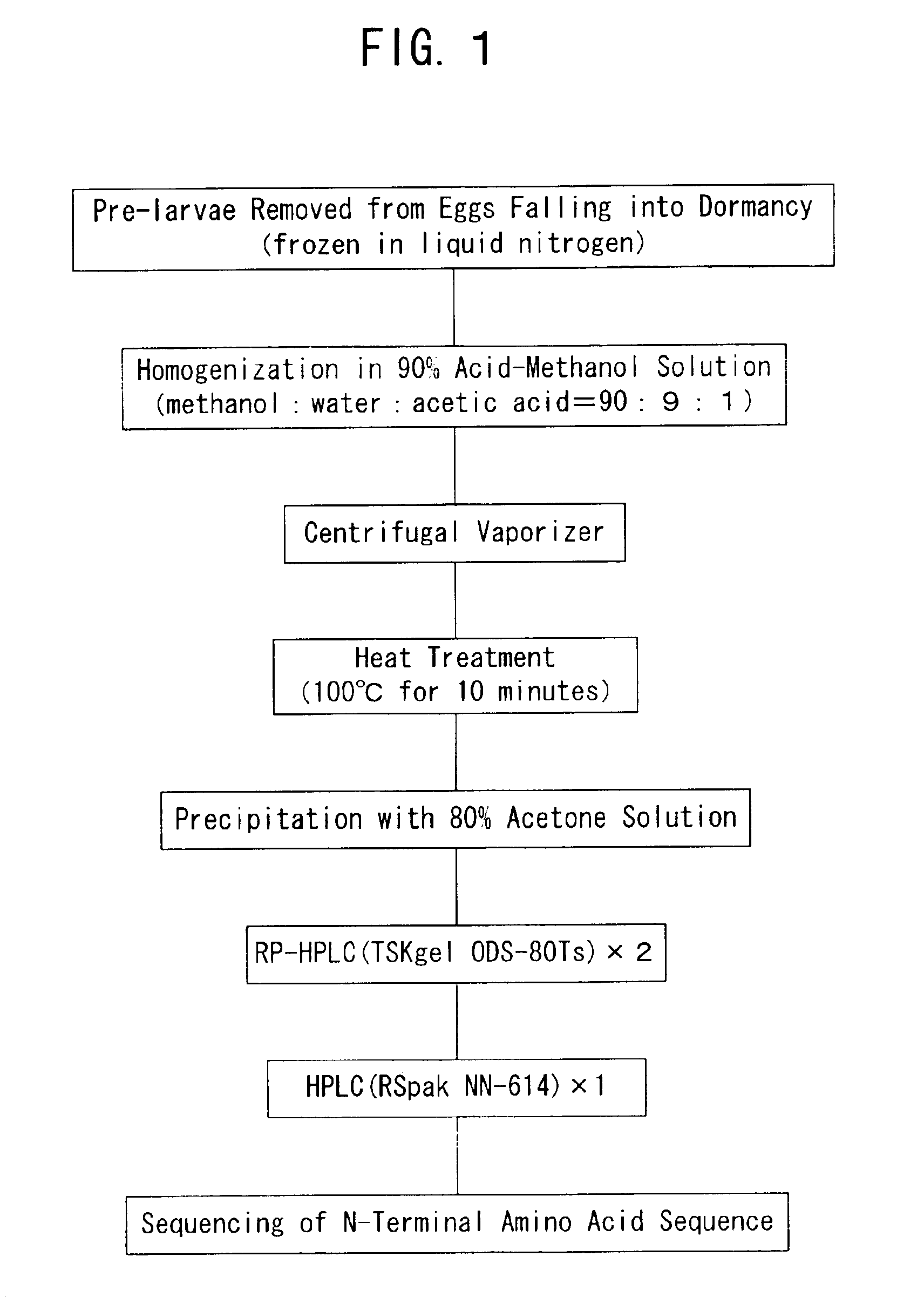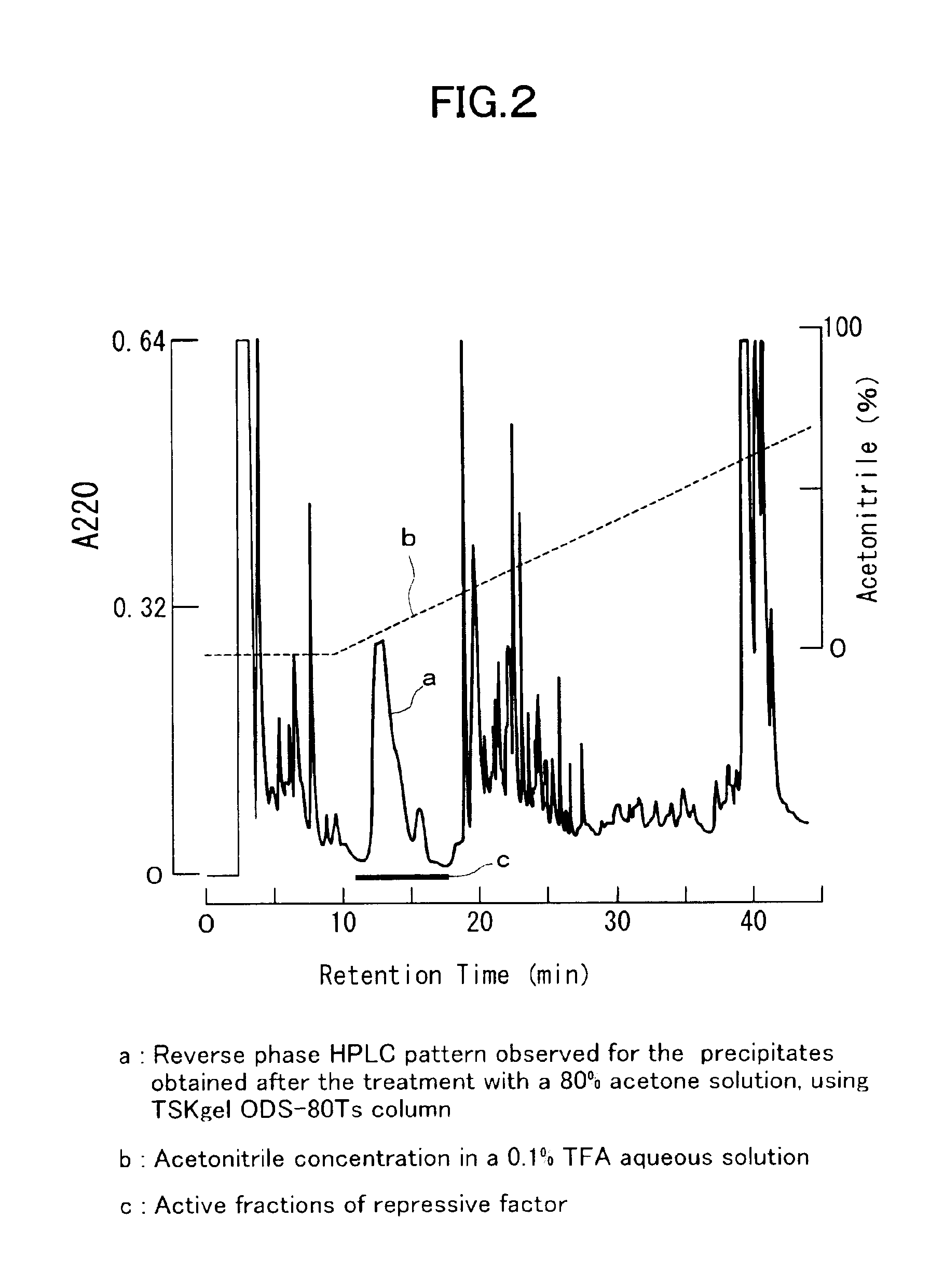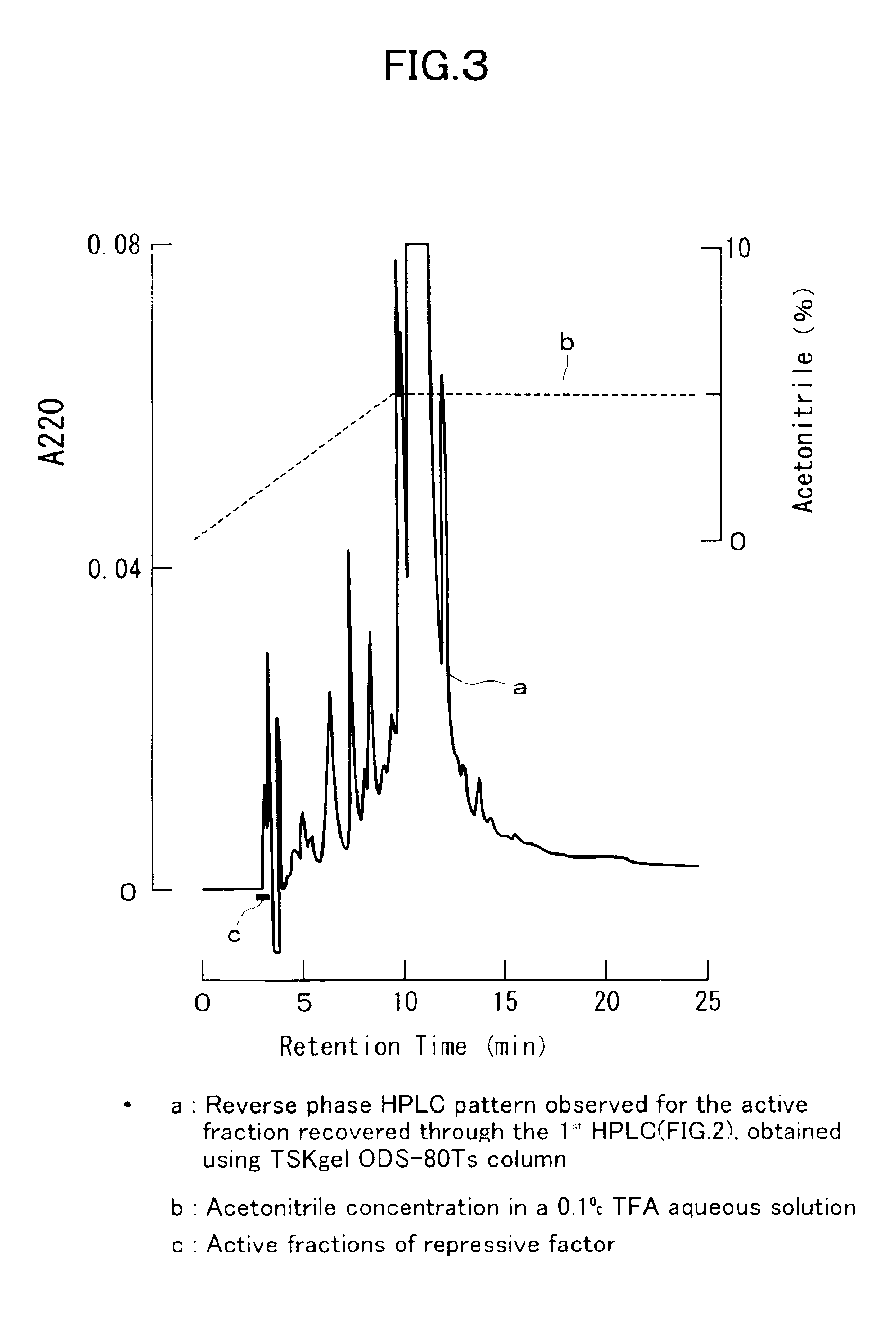Gene Any-RF; dormancy regulatory substance, process for producing the same and cell regulator for vital cells
a technology of gene anyrf and dormancy, which is applied in the field of gene anyrf, can solve the problems of not yet discovered any dormancy-control substance in any mammal, the presence of any hormone other than the foregoing involved in dormancy has not yet been confirmed at all, and the presence of any dormancy-related hormone substance has not yet been discovered at all. achieve the effect of reducing the risk of cancer
- Summary
- Abstract
- Description
- Claims
- Application Information
AI Technical Summary
Benefits of technology
Problems solved by technology
Method used
Image
Examples
example 1
Isolation of Active Fraction
[0103]To isolate and purify a dormancy-control substance from about 1,500 pre-larvae of Antheraea yamamai, there were used the processes described in detail in the foregoing section entitled “I) Isolation of Active Fraction”. In the first RP-HPLC system, the active fractions were eluted within the elution time ranging from 11 to 17 minutes (FIG. 2). In the second RP-HPLC system in which the active fractions were injected, the desired activity was observed for the initial peak eluted after about 3 minutes from the initiation of the elution (FIG. 3). In the subsequent third mixing-separation mode HPLC system in which the active fraction obtained in the second RP-HPLC system was injected, the desired activity was observed for the peak eluted after about 9.5 minutes from the initiation of the elution (FIG. 4). We assumed that the isolation and purification were completed by a series of the foregoing operations and the final active fraction isolated from the 1...
example 2
Determination of Structure of Control Substance
[0104]After dissolving, in pure water, 100 μl of the dormancy-control substance prepared in Example 1, the sequencing was carried out up to 10 cycles from the N-terminal using an aqueous solution, which contained 25 μl of the dormancy-control substance. As a result, it was confirmed that the amino acid sequence of the active substance having a dormancy-control activity was Asp-Ile-Leu-Arg-Gly. To examine whether the C-terminal of the active substance was in an amidated form (—NH2) or a free acid form (—COOH), this isolated and purified product and the foregoing two synthetic peptides were analyzed using MALDI-TOF MS (mass spectrometer). As a result, there were observed two large peaks at 571.858 and 572.846 for the isolated and purified product (FIG. 5), a maximum peak at 571.959 for the synthetic peptide: Asp-Ile-Leu-Arg-Gly-NH2 (the peptide of SEQ ID NO:1 having the C-terminal amidated) (FIG. 6) and a maximum peak at 573.045 for the s...
example 3
Bioassay of Isolated and Purified Product and Synthetic Peptides
[0106]The isolated and purified product and two kinds of the synthetic peptides having an amino acid sequence identical to that of the product and having C-terminals in the amidated form and free acid form respectively were injected into pre-larvae of Antheraea yamamai, which had been destined to awake from the dormancy by treating them with an imidazole compound KK-42 to thus examine the state of the larvae awakening from the dormancy and average days required till the larvae awoke from the dormancy and to evaluate the rate of larvae awaken from the dormancy. More specifically, 0.1 μg / 0.5 μl each of a KK-42 solution in acetone was applied on the ventral portion of each larva to thus awake 100% of the larvae from the dormancy. Subsequent to the completion of the treatment for awakening from the dormancy, 0.05 μl each of distilled water was injected to each larva after 24 hours from the completion of the treatment and th...
PUM
| Property | Measurement | Unit |
|---|---|---|
| Fraction | aaaaa | aaaaa |
| Fraction | aaaaa | aaaaa |
| Fraction | aaaaa | aaaaa |
Abstract
Description
Claims
Application Information
 Login to View More
Login to View More - R&D
- Intellectual Property
- Life Sciences
- Materials
- Tech Scout
- Unparalleled Data Quality
- Higher Quality Content
- 60% Fewer Hallucinations
Browse by: Latest US Patents, China's latest patents, Technical Efficacy Thesaurus, Application Domain, Technology Topic, Popular Technical Reports.
© 2025 PatSnap. All rights reserved.Legal|Privacy policy|Modern Slavery Act Transparency Statement|Sitemap|About US| Contact US: help@patsnap.com



